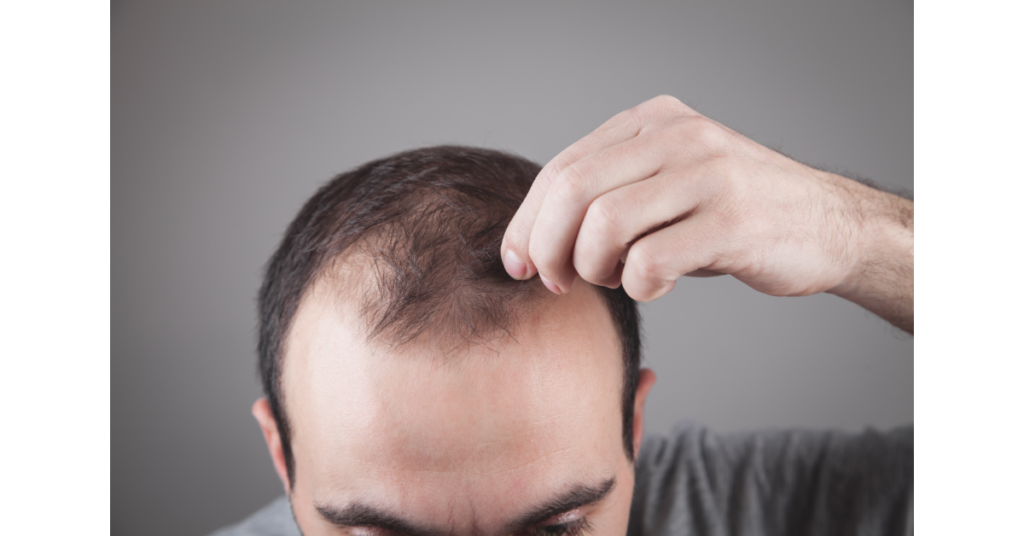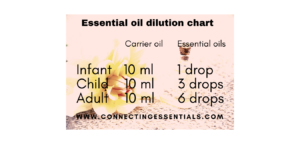Losing your hair can be very sudden like clumps of hair in the shower or sometimes it is gradual. Hair loss can create a significant amount of anxiety for both men and women. The fear of losing hair can start quite young. I have a teenager that is getting a bit stressed out by the receding hairline as well as the thinning of the hair. Androgenetic Alopecia is a condition that can occur in both women and men. In women, it would not lead to total hair loss but in men it normally start in an M pattern and then gradually increases. Let’s first look at what female pattern hair loss looks like.
Female pattern hair loss
When we look at the genetics of female pattern hair loss it is a recessive gene, which means both sides of the family must have the gene.
Thinning occurs on the top or front of the head. Female genetic hair loss it is classified into 5 different types.
Some positive news is that it will not lead to complete baldness. It is however still very distressing for women dealing with it.

Hormonal
Hormones play a huge role when it comes to hair health. As we journey through life and mature our hormones change as well. Younger women who have underlying hormonal conditions can trigger this genetic hair loss pattern.
With older post-menopausal women androgen has quite a significant impact on the body. Little stubborn hair on the chin area appear and the skin can change as well. When combine with extreme stress Androgenetic Alopecia can become active in woman who has this predisposition. This can trigger genetic hair loss.
Treatment
Visit a trichologist
Trichologist studied hair and scalp health and would be able to guide you through this. Including both a trichologist, dermatologist and an endocrinologist would be beneficial .
Healthy lifestyle changes
Looking after your physical and emotional health is crucial. Since the hair loss is systemic it is a good place to start. You are what you eat. I don’t mean that you will get thicker hair with diet changes but nutrient deficiencies shows in your hair. Dull, brittle hair and hair loss can all be tied back to a poor diet.
Hair pieces
Using hair pieces and wigs can not only help you to feel more comfortable and confident but will also minimize the need to backcomb the hair and put a lot of hairsprays on to style the hair in such a way to cover the thinning spots. Excessive hairspray is not good for scalp health at all.
Look after your scalp
There is quite a few product on the market to help with hair loss and improving your scalp health. When it comes to genetic hair loss and androgenic alopecia you will need products that contain Minoxidil. This can be quite confusing choosing between all the options. Shampoos containing Minoxidil contains a lower percentage of Minoxidil and only has contact with your scalp for a short time while you shampoo your hair.
Using a serum or foam that contain Minoxidil will be more effective.
Women have thinner skin than men so for women a 2 % product line will be enough.
Male pattern hair loss
Androgenetic alopecia and might start very early, like in the teen years. I have a teenage son who is already showing signs of this and have the distinct M shape. It has a very high genetic percentage and is caused by a dominant gene which means either mother or father’s side of the family.

How does Androgenetic Alopecia start?
Testosterone in the scalp is converted to Dihydrotestosterone otherwise known as DHT.
The DHT has a significant influence on the hair follicles on the crown area as well as the front and the top of the head. DHT cause the stem cells of the hair follicle to form hair that become thinner and shorted and then eventually the hair stop growing altogether.
When the hair follicle is inactive the scalp is often shiny and completely bald.

How do you stop this?
There is no cure for Androgenetic Alopecia but by blocking the production of DHT you can help to slow down the hair loss. Getting professional medical advice is necessary because some treatment options like finasteride can have serious side effects.
Treatment options
Visit a trichologist
Trichologist will point you in the right direction and they often work along with the dermatologist to find a treatment plan that will work for you.
Systemic treatment options
Vitamin and mineral supplements as recommended by your dermatologist or trichologist will help to create a healthy scalp from the inside.
Minoxidil topical treatment
Some of these Minoxidil products are available over the counter or in hair salons. These foams or serums need to be applied twice a day and can be quite effective. It is vasodilator which means it will increase the blood circulation. This would bring some more nutrients to the follicle and help to maintain a healthy scalp.
Hair transplant surgery
This is an expensive option that has proven successful for many and is worth investigating. You will have to do your homework though and see if this would work for you
Hormone replacement therapy and hair loss
There is not enough data out there yet and the connection between hormone replacement therapy and hair loss is still being studied.
Hormone replacement therapy for transwomen
Hormone therapy for transwomen involves decreasing testosterone and increasing female hormones such as estrogen. Some transwomen who were struggling with Androgenetic Alopecia might see a difference in hair loss but it does not seem like it is across the board.
Blocking DHT in men can slow the hair loss down but the added estrogen with the lower DHT levels can cause muscle and bone structure changes which might cause scalp inflammation.
The scalp inflammation can trigger DHT production which increase hair loss again.
Hormone replacement therapy for menopausal women
Menopause can cause thinning of hair due to the increased testosterone.
HRT can relieve some symptoms of menopause like hot flashes and many women with thinning hair is hopeful that it will reverse the hair loss. For some it does but for others unfortunately the hair loss can increase.
Can you use essential oils for genetic hair loss?
I have written on how essential oils can be used for hair growth before and you can have a read that when you click here.
In 2015 a study was done to compare Rosemary essential oil versus a 1 % Minoxidil treatment.
After 6 months the results were astonishing. The Rosemary oil group had significant more hair than the Minoxidil group.
Rosemary oil improves the blood flow to the follicle which means that the follicle is getting nutrient dense blood and therefore it will stimulate growth. You can ready more on how hair grows here.
Cedarwood is another oil that stimulate the follicles by improving the blood flow to the scalp. Cedarwood is also a very grounding oil. Losing your hair can bring on a lot of stress and using essential oils that can calm you down and grounding you is beneficial. You can read more about how essential oils can help your emotional wellbeing here.
How do I use the essential oils?
Just like using scalp treatments you would have to use the essential oils for at least 6 months to achieve results.
- 1. Use daily
- 2. Mix it with your shampoo
- 3. Massage it daily into your scalp and leave it on for 10 min prior to washing. Always mix essential oils with a carrier oil.

Conclusion
For both men and women suffering from Androgenetic Alopecia there are options available. Understanding what is going on inside your body is key. Seeing a professional such as a trichologist or dermatologist and then looking at your different options.
Remember your hair is reflecting what is happening in your body. What is your body trying to tell you? Do you need to do something about your stress levels? Stress has a huge impact on our metabolic functions and systemic health.
Take care of you so that you can take care of those you love
Elize
Resources
https://myhair.life/blog/minoxidil-versus-minoxidil-shampoo/
https://pubmed.ncbi.nlm.nih.gov/25842469/
